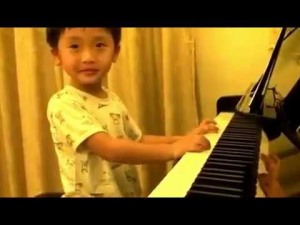Survey after survey shows that learning to play a musical instrument is one of the most common desires. A surprising number of people, in fact, try at one point in their lives to become competent musicians, but almost as many are quickly turned away in frustration. Despite how desirable these skills are, traditionalism, and perhaps a lack of imagination, has kept the state of the art of music instruction from advancing very far, even over the course of centuries. A few innovative, creative approaches, however, like the one detailed at MusicVideoTheory, now offer hope that far more people can succeed in their dreams of becoming musicians.
The piano has been described as the king of musical instruments and for good reason. In its grandest form, it is one of the largest instruments of all, being bested in this respect only by permanent pipe organs and a few similarly-sized oddities. The piano’s musical range is as great as its size often is, too, with among the lowest audible notes being as easy to produce, thanks to the wide span of its keyboard, as the highest ones. The piano has another striking feature, too, in that its keyboard so closely resembles the printed musical staffs that are used to convey the melodies, chords, and harmonies of musical pieces.
For the creators of the MusicVideoTheory approach to learning to play the instrument, this last feature was the most interesting of all. Thinking hard about this striking fact, they were able to work out an innovative way of combining piano instruction with education about musical theory, which they have made available at http://www.musicvideotheory.com.
Under their approach, learning to play the piano and learning the fundamental principles which underlie Western music are twin, mutually-supporting endeavors. Instead of spending time with books, on the one hand, and the piano itself, on the other, students who follow the Music Video Theory course of learning find that they gain the benefits of both approaches in tandem. Their early efforts at playing simple songs on pianos or keyboards, they discover, are also equipping them with theoretical knowledge that can allow them to improvise or easily write songs of their own.
The incredibly rewarding nature of learning in this way ensures that frustration, an enemy of too many would-be musicians, is kept at bay. Instead of wondering whether they will ever be able to play anything worthwhile, students who keep up with the course can, early on and quite easily, see how their educational trajectories will progress.
